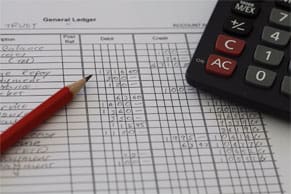Most of us perform total cost of ownership calculations daily. Whether in a car dealership, salon, or grocery store, we do on-the-fly estimates of how much value we’ll receive from goods and services before we decide to spend money. It’s a more formal process in business, where books need to balance and direct and indirect costs must be accounted for, but the end goal is the same—decide whether a purchase makes financial sense.
Here’s more on how considering the full TCO picture helps businesses make more informed buying decisions, optimize their investments, and avoid unexpected financial risk down the line.
What Is Total Cost of Ownership (TCO)?
Total cost of ownership is a comprehensive financial assessment that goes beyond the initial purchase price of a tangible good or service to include all direct and indirect costs related to owning and operating the asset over its lifecycle. It can be summarized in a formula:
TCO = acquisition cost + operating costs + maintenance and incidental costs – the value of the asset at its end of life.
For items like machinery, furnishings, or vehicles, TCO costs include the initial purchase price, interest payments on a loan if applicable, fees related to transportation and installation, and then subsequent operational costs, like fuel and general maintenance. These assets may be sold to recoup some of that investment.
When it’s business applications, like ERP software or a cloud platform sold in a software as a service model, the calculation goes beyond the recurring subscription, which is an operating expense. In the case of software, TCO includes initial setup and implementation costs, including any needed customization, data migration, integration with existing systems, user training, and in some cases a support contract. There may also be add on costs, such as data storage fees or professional services. Companies will want to compare the TCO of running an application on premises over three to five years. For in-house apps, consider investments in physical IT infrastructure and personnel to secure and support the system.
A key factor in TCO is the timeframe over which you’ll perform the analysis; that depends on the asset and your industry. Three to five years is a commonly used span, particularly for technology investments. Five to 10 years may be more appropriate for larger capital investments like manufacturing equipment or vehicles. The key is to consider the entire useful life of the asset, from acquisition to disposal, while bearing in mind that predicting costs accurately over longer periods can be challenging.
Key Takeaways
- It’s vital to consider all the operational costs of a purchase beyond its initial price
- Subscriptions and financing costs also play a role in the total cost of ownership
- The item with the lowest TCO isn’t always the most suitable choice
Total Cost of Ownership (TCO) Explained
When calculating TCO, you’re aiming to understand the full cost associated with an asset or service over its useful lifecycle, or the timespan you’ve set. Let’s consider a company that’s thinking about buying a van for deliveries.
A new van would have a higher initial purchase price than a second-hand one but should stay in good working condition longer and will have a warranty that may cover parts that break. However, if the new van is full of electronic systems, drivers may require user training to operate them, and in some cases, manufacturers charge a subscription for access to features like vehicle tracking and advanced navigation.
Whichever route is taken in this instance—new or secondhand—the TCO will need to factor in running costs. Fuel, insurance, maintenance, and taxes all need to be calculated and added to the equation. If the business must finance the purchase to afford a new vehicle, the interest paid on that loan is a direct cost associated with that asset. And even before a business takes ownership, it needs to weigh how long the purchase will be expected to be operational—a van may last 10 years, but the final five may have greater maintenance costs—and whether it could be sold to recoup some costs when it’s time to replace it.
Once all operational costs of making a purchase have been tallied, it’s worth asking, “Might it be more cost effective to lease instead? Or could we outsource deliveries entirely?” These routes remove a lot of the factors mentioned above, but there are tradeoffs. The best choice depends on if the business prefers making the capital expenditure of buying an asset outright, or if it is happier with the operational expenditure that comes with paying for a service.
Likewise for software, companies that need business systems often choose not to run it in their own data centers. A SaaS model eliminates the need for significant upfront investments in IT infrastructure and expertise, and choosing a suite that integrates various business functions, like ERP, CRM, and e-commerce, reduces the need for integration, maintenance, and training.
When a business has considered all its TCO options, it can conduct a financial benefit analysis to work out the solution that provides the most bang for its buck and make an informed purchasing plan. The bottom line with total cost of ownership is to remember that the initial purchase or subscription price is not the only factor. Only when all expenses are considered can decision-makers select the right options for the business.
#1 Cloud
Accounting Software









